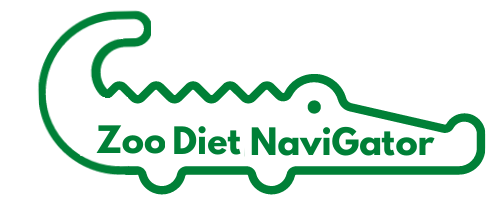Importing animals from ZIMS: Difference between revisions
From ZDN User Guide
(Created page with "It is not necessary to import animals from ZIMS. You do not actually need to enter animals at all to use the software. Adding animals to diets has two purposes, neither of which are critical: * Enables you to search for diets using animal numbers and names * Adds the animal identifiers to the bottom of diet cards so others can see what animals are included. If you are not a ZIMS user, you can manually add animal data in Settings > Edit Animals = Importing from ZIMS =...") |
mNo edit summary |
||
| Line 9: | Line 9: | ||
= Importing from ZIMS = | = Importing from ZIMS = | ||
There are two stages | There are two stages. The instructions for this (along with screenshots) are in the NaviGator > Settings > Import Animals from ZIMS window. | ||
# In ZIMS | |||
## In ZIMS, search for all of your local animals | |||
## Ensure your columns exactly match the columns listed below | |||
## In ZIMS, click the Excel icon at the bottom of the screen to export the animal data | |||
# In NaviGator | |||
## Go to Settings > Import animals from ZIMS | |||
## Click the "Select and Import" button | |||
## Choose the file(s) you exported above. <code>⚠ Warning: Multi-institution ZIMS users: You need to import animals from EVERY institution each time. You cannot just update one institution. If you only select one institution, animals from the others will be deactivated.</code> | |||
When you import, the following happens: | When you import, the following happens: | ||
* Species NOT currently in database will be added. | |||
* Enclosures NOT currently in database will be added | |||
* Animals NOT currently in database will be added. | |||
* For animals already in database, their data will be updated | |||
* Any animals missing from this import (that are already in the database) will be marked as inactive. | |||
Revision as of 15:24, 16 October 2023
It is not necessary to import animals from ZIMS. You do not actually need to enter animals at all to use the software. Adding animals to diets has two purposes, neither of which are critical:
* Enables you to search for diets using animal numbers and names * Adds the animal identifiers to the bottom of diet cards so others can see what animals are included.
If you are not a ZIMS user, you can manually add animal data in Settings > Edit Animals
Importing from ZIMS
There are two stages. The instructions for this (along with screenshots) are in the NaviGator > Settings > Import Animals from ZIMS window.
- In ZIMS
- In ZIMS, search for all of your local animals
- Ensure your columns exactly match the columns listed below
- In ZIMS, click the Excel icon at the bottom of the screen to export the animal data
- In NaviGator
- Go to Settings > Import animals from ZIMS
- Click the "Select and Import" button
- Choose the file(s) you exported above.
⚠ Warning: Multi-institution ZIMS users: You need to import animals from EVERY institution each time. You cannot just update one institution. If you only select one institution, animals from the others will be deactivated.
When you import, the following happens:
- Species NOT currently in database will be added.
- Enclosures NOT currently in database will be added
- Animals NOT currently in database will be added.
- For animals already in database, their data will be updated
- Any animals missing from this import (that are already in the database) will be marked as inactive.
